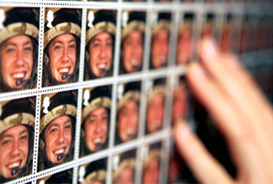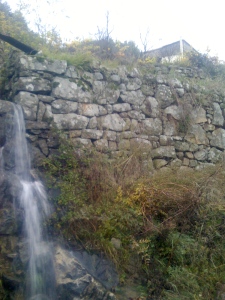I’ve written on this before and I’m bound to write on it over and over again because it’s at the very heart of our work as narrative enquirers in an organisational context.
It comes up for me again now because of the literary festival currently going on in London which has the theme of saying the unsayable A session I missed was with Kamila Shamsie and Tahmima Anam. In an article preceding the session in the Guardian Kamila Shamsie writes of growing up in a censoring dictatorship in Pakistan, an era when the ‘absence of truth was often possible without recourse to lies.’. She writes of the thrill of the effect of Shame, by Salman Rushdie, a book about politics in Pakistan:
‘Shame was never going to attract a vast readership in Pakistan, but for me – at 10 too young to read the book – it was the first indication that fiction was a place of truth, more trustworth than the news.’
She goes on to say that fiction writers can go to places which news reporters and historians fear to tread. And all the same, the emotional truth which becomes possible through fiction is not possible without facts:
‘You need to know the contours of the world into which you are going to drop your made-up characters and their made-up lives; when people ask me which parts of my novel are based on things that really happened, I point out that I can’t make up context, only the shapes that fill it.’
Another take on the truth and fiction comes in ‘Reading Lolita in Tehran’ by Azar Nafisi. The subversive women’s book club she sets up reads first ‘A Thousand and One Nights’. Nafisi says:
‘I formulated certain general questions for them to consider, the most central of which was how these great works of imagination could help us in our present trapped situation as women. We were not looking for blueprints, for an easy solution, but we did hope to find a link between the open spaces the novles provided and the closed ones we were confined to. I remember reading to my girls Nabokov’s claim that ‘readers were born free and ought to remain free’.
So for Nafisi, rather in the Chinese way, the dislocation of time and space and examination of the big stories of birth, death, love, freedom, oppression, through literature creates a freedom for the reader to see their own life through the window of another experience.
But what about another challenge of the truth – it’s relative dullness. In his brilliant book ‘Stuart, a life backwards’ Alexander Masters starts, in chapter 0, with a disappointed conversation with his subject (Stuart, Shorter: thief, hostage-taker, psycho, addict, raconteur):
‘Stuart does not like the manuscript.
Through the pale Tesco stripes of his supermarket bag I can see the wedge of my papers. Two years’ worth of interviews and literary effort.
‘What’s the matter with it?’
‘It’s bollocks boring.”
And he suggests
‘Do it the other way round. Make it more like a murder mystery. What murdered the boy I was? See? Write it backwards.’
And so that is what Masters does. Triumphantly. It is an extraordinary story. Stuart’s life backwards, and Alexander Master’s own growth and change through the challenge of grappling with both finding out this life and struggling with a way to structure and convey it. And not only that, in the background, as he learns of the bigger issues of homelessness, addiction, abuse, and the institutitions involved, an extraordinary, vibrant, informed picture grows of this whole issue of homelessness which transforms the reader’s insight. So fact, fiction, story structure, biography, autobiography all blend to convey a far greater truth than either the facts or the story on their own. An embrace of narrative and analysis.
Dave Eggers faced the same kind of issue in trying to share the story of Valentino Deng, one of the ‘lost boys’ of Sudan. In the Guardian Review of 26th May, there is a long, fascinating article called ‘It was just boys walking’ which details his struggle to wrestle the facts, gaps and partial recollections of his subject into a form which would engage the reader:
‘Valentino and I met up in Atlanta and San Franciso, spending days and weeks together, recording his story. We talked for hundreds of hours on the phone and sent thousands of emails back and forth…..I had been working on a book of oral hsitories from the lives of publics chool teachers in the US, and had studied different methods of storytelling. I assumed I would simply interview Valentino, straighten the narrative out a bit, ask some follow-up questions, and then assemlbe the book from his words. I even imagined for a while – much of our first year together – that I would simply be the editor of the book, not it’s author.’
But at the end of the first year Eggers realised that the material he had ‘did not transcend the many human rights reports and newspaer articles already avaialbel to the world. It was clunky, spare, and full of holes.’
After huge labours and an emotional rollercoaster, Eggers finally did four things to make a window through which the truth and strength of the story could be conveyed:
1. He did source research himself, going to Sudan to fill in the gaps and increase the richness of the description
2. He wrote it as fiction
This raises some interesting issues for Thomas Jones, reviewing the book in the London Review of Books. In a genuinely favourable review, he raises some pertinent questions about authorship and ownership, which I’ll write more about another time:
‘And yet, that a story so concerned with so many different forms of dispossession should itself be subject to a ‘variety of appropriation is not unproblematic, and requires a more positive justification than mere silence. Eggers, unlike many of Achak’s American friends and benefactors, does not feature as a character in What Is the What. No doubt it was important to avoid distracting readers with anything that could be mistaken for cute metafictional trickery, one of the less interesting but more remarked-on aspects of Eggers’s first book, A Heartbreaking Work of Staggering Genius, a lightly fictionalised account of bringing up his younger brother after the deaths of his parents from cancer. But in What Is the What, Eggers is conspicuous by his absence from the narrative, which leaves you wondering how his name came to such solitary prominence on the cover, how the autobiography of Valentino Achak Deng came to be ‘Copyright © Dave Eggers’.’
3. He used the more recent experiences of Deng, being mugged in his own home in the US by people he didn’t know as a framing device:
‘It was at this time I knew the book needed to be not only about Valentino’s expeirences in Sudan ajd the camps, but also about the many unforeseen struggles of his life in the US.’
And finally, he underpinned the structure with an ancient creation myth known in southern Sudan, which gave the book it’s final title ‘What is the What’
And then this today from Knowledge at Wharton on Michael Crichton’s new book ‘Next’. The article is called ‘A Novel on Genetic Research: It’s ‘Fiction, Except for the Parts That Aren’t’
A few extracts to get the juices rising, my bold:
‘In Next, published in November 2006, Crichton takes up genetic engineering again, this time from the vantage point of the law.
Next weaves together several storylines in order to trace the complex and confusing interplay of scientific innovation, legal loopholes, moral limits and economic opportunity.
Together, these real and imagined stories create a troubling portrait of a teeming biotech industry marred by corporate greed, legal confusion and moral uncertainty. Crichton’s is a world in which marketing executives promote the idea of using genetically modified animals to sell their products. It’s a world in which lawyers debate whether one’s body parts might actually be the highly profitable property of someone else. And it’s a world in which no one knows how to think through the biological and ethical dilemmas posed by a science that can rearrange natural boundaries at will. What people in this world are left with, in the absence of scientific and moral clarity, is the corrupting promise of unlimited economic opportunity and a legal system that is frighteningly ill-equipped to cope with the kind of ethical puzzles genetic research raises.
Crichton’s point is that as science outpaces the understanding of lawyers, judges, and government officers, our ability to maintain a coherent legal position on it is being radically compromised. And, as the examples cited above show, he has written convincingly on this point for some time. In Next, he crafts a novel around this argument as a way of painlessly developing it (a fast-paced story is always easier to follow than a complicated analysis). This might sound like cheating. And from an analytical viewpoint it does leave something to be desired. But a novel offers Crichton something nonfiction does not: It provides him with a way to help readers use their imaginations to grasp the implications of the law as i now stands
.’
it’s evident in new kinds of scientific research, futures work and horizon scanning, this kind of blend of fact and fiction, present reality and future imagined states will become a necessary form, because only through hybrid vehicles of this kind can we have the kinds of debate and be moved to the necessary actions which we need to have as a society, a nation, and beyond national, cultural and educational boundaries. It’s worth taking a look at some of the work done by Defra (and in part commissioned from Sparknow) in their Horizon Scanning and Futures unit to explore this further.
I feel strongly that all these structural devices, the blend of fact, fiction, biography, autobiography, metaphor, myth, folktale, legend, traditional stories, the reorganising of time from liner to parallel to reversed, must all be explored by us who seek to do work using story and narrative in the context of organisations, to find ways to show people themselves and others, the worlds and systems they live and work in, the differences they can make. We must not be sucked into the pointlessness of the business case study in our attempts to render our lives, and the lives of others, truthfully. I’ll just keep on coming back, over and over again, to Clifford Geertz but Clifford Geertz plus.
‘In attempting to answer grand questions …, the anthropologist is always inclined to turn toward the concrete, the particular, the microscopic. We are the miniaturists of the social sciences, painting on Lilliputian canvases with what we take to be delicate strokes. We hope to find in the little what eludes us in the large, to stumble upon general truths while sorting through special cases.’
[From the introduction to Islam Observed: Religious Development in Morocco and Indonesia by Clifford Geertz, 1968]
In our narrative enquiry, we must hold onto our role as miniaturists and act as custodians who find ways to get people to see and hear and feel those tiny moments which hold huge difficult truths. And to do this we must play with new forms of representation to make sure what we make tears in the fabric that has been so cunning woven, which deludes us that the way organisations report on themselves, because apparently factual is truthful. It is not.
I’ve always liked, in this respect, the Buddhist notion of having a deep grasp of the past and taking a long view of the future in order to understand the now.



You must be logged in to post a comment.